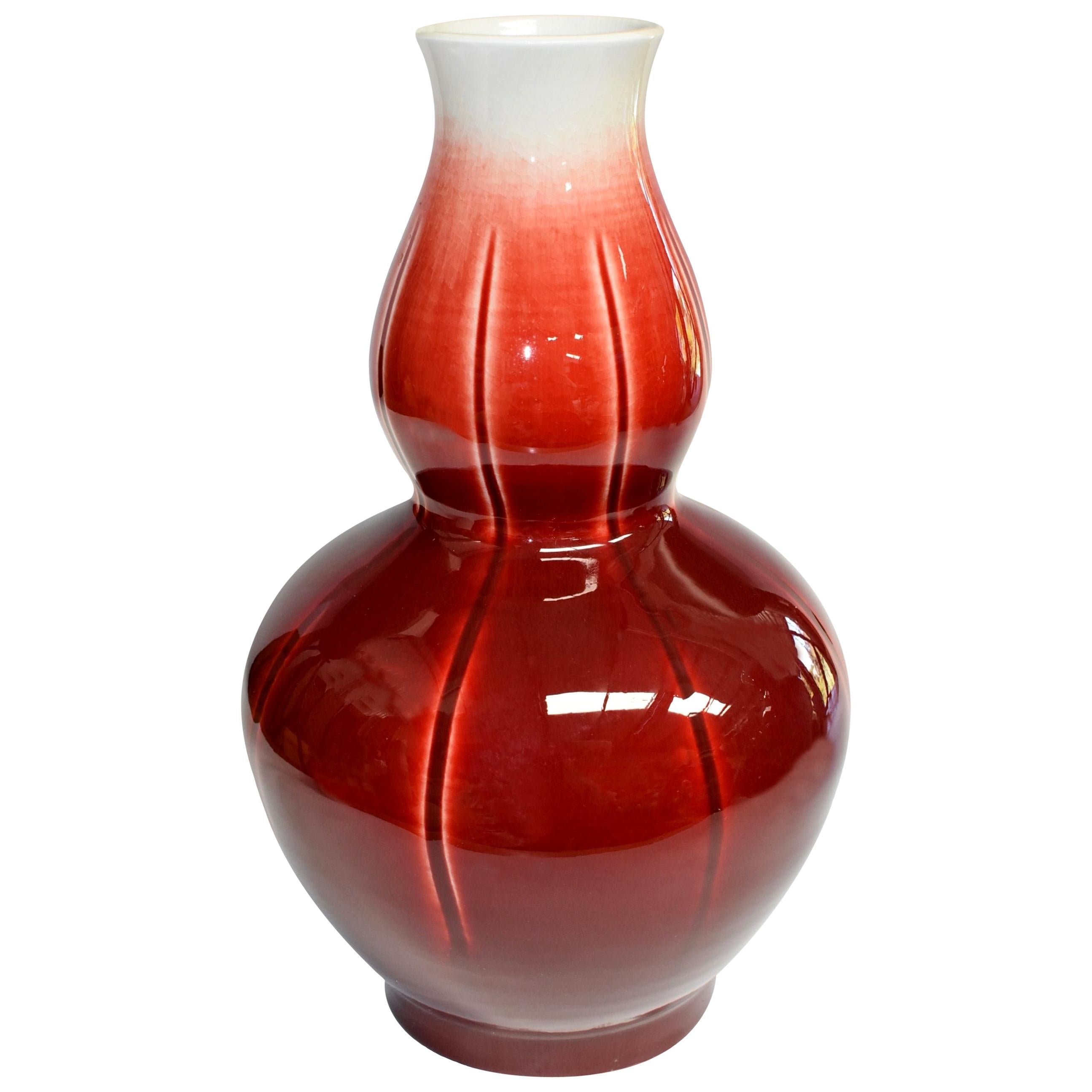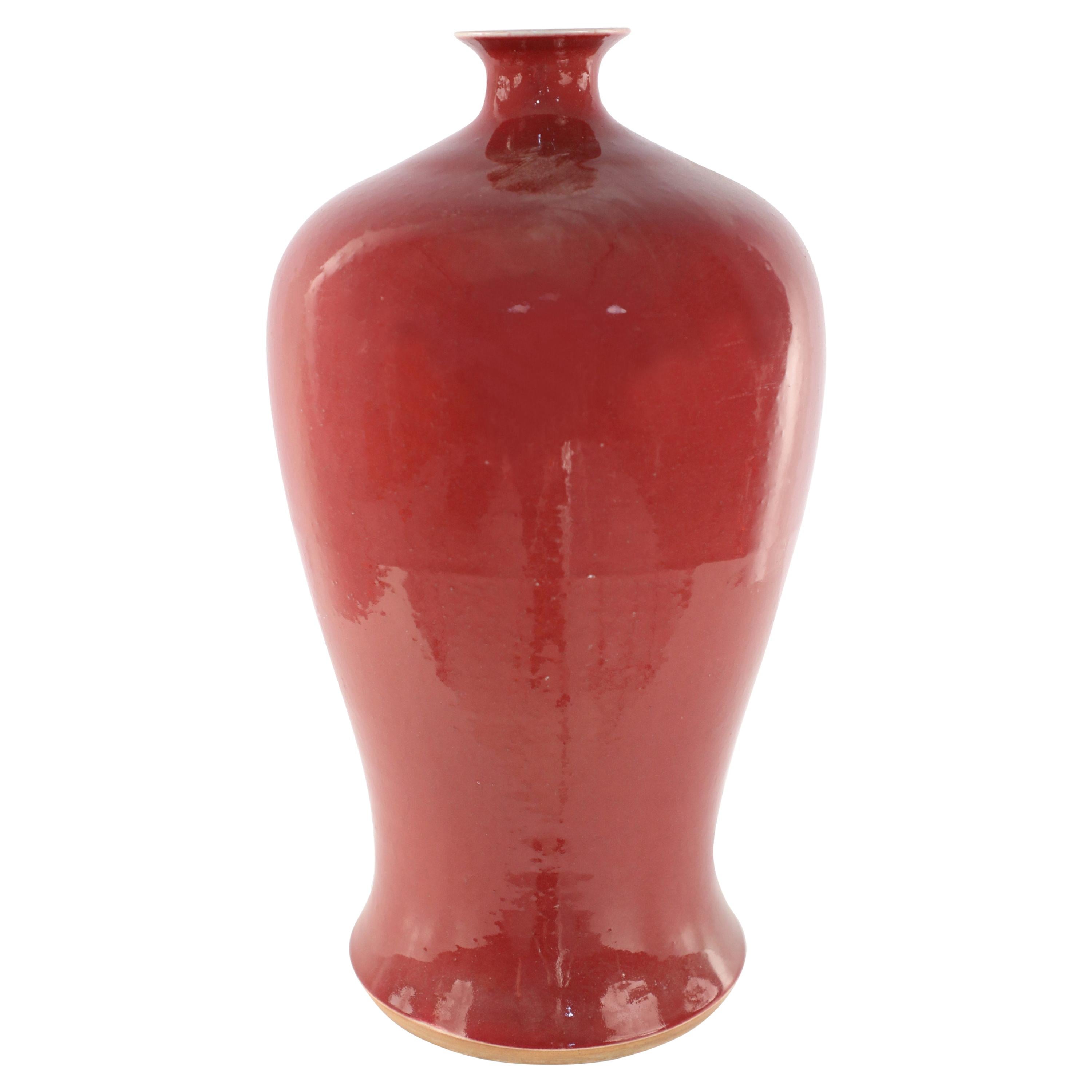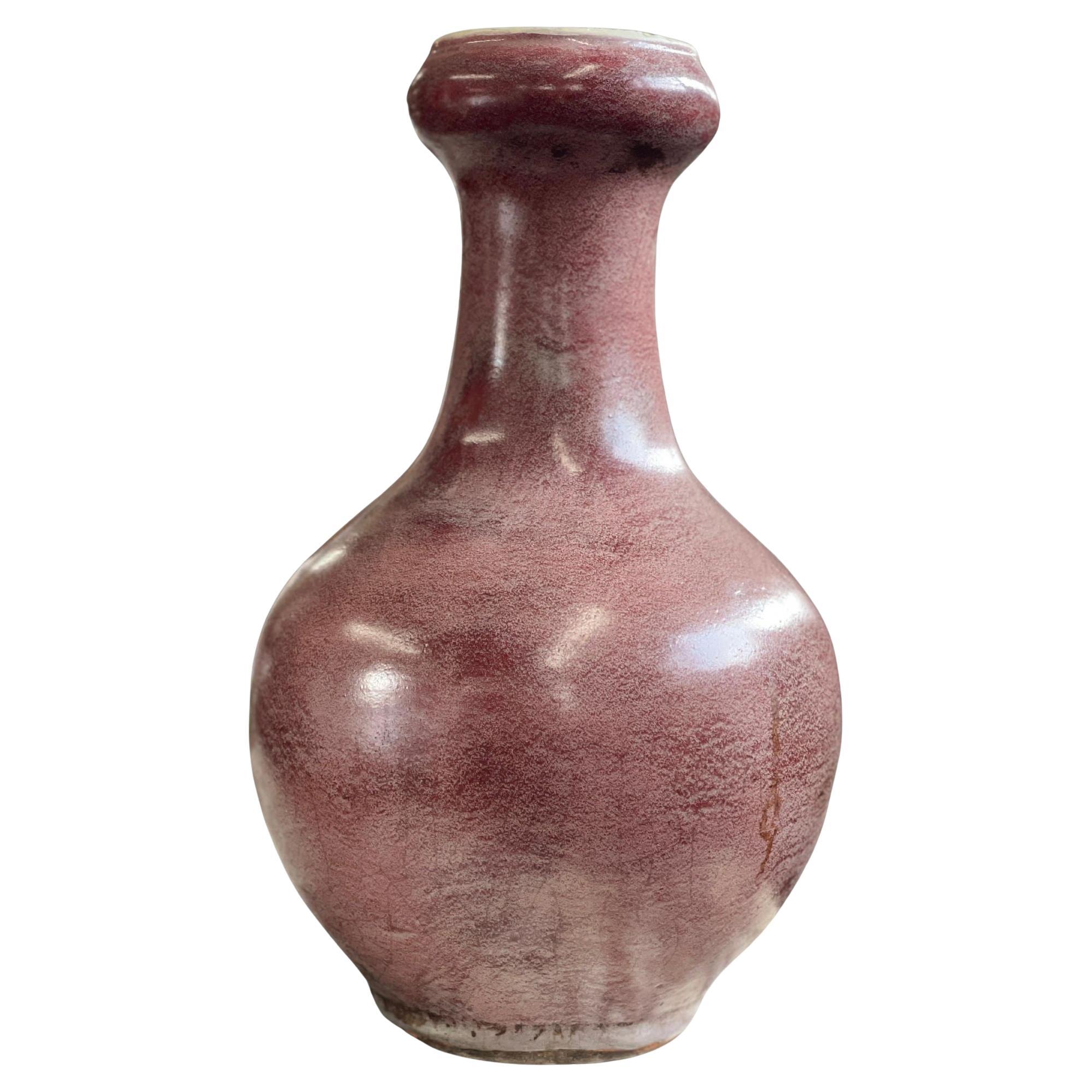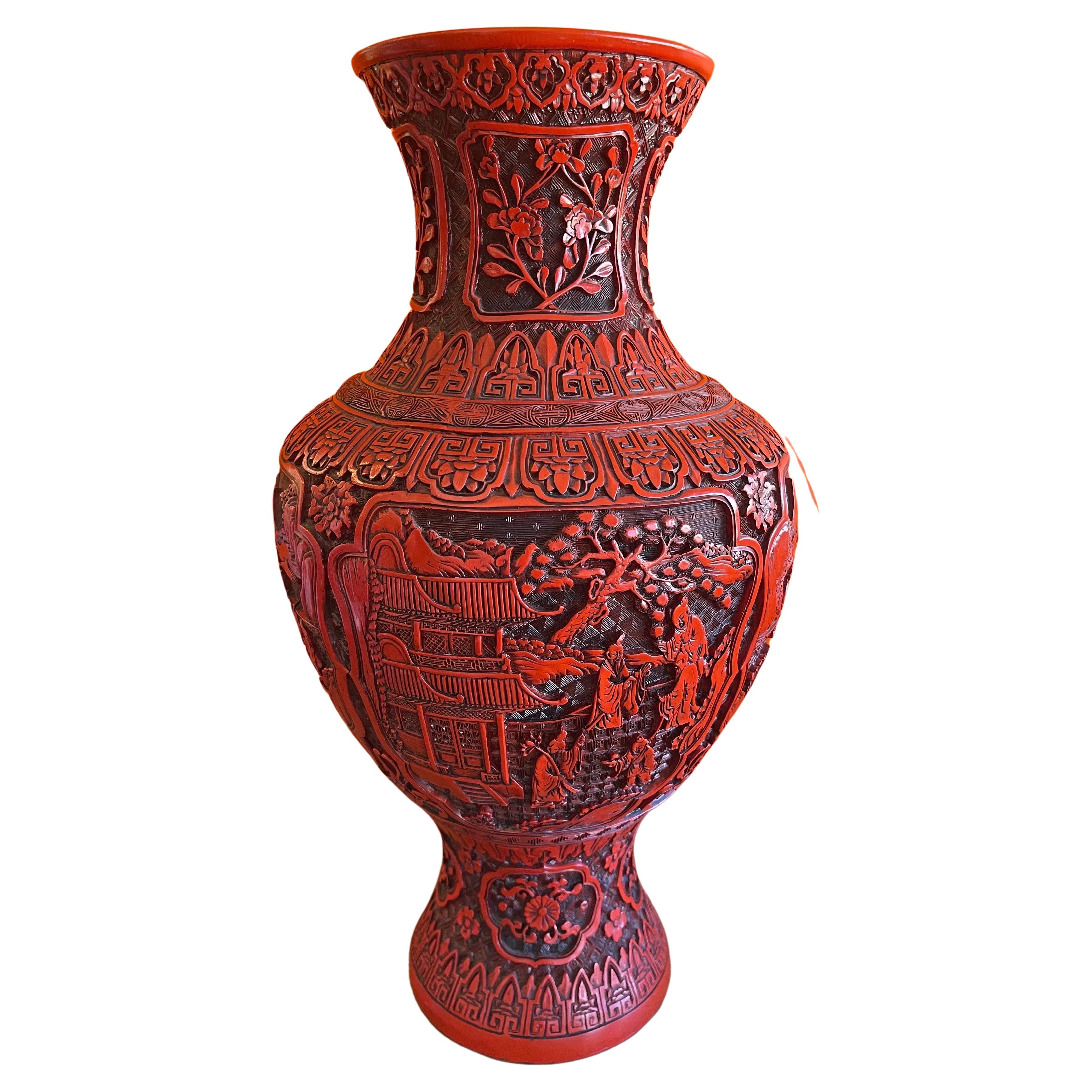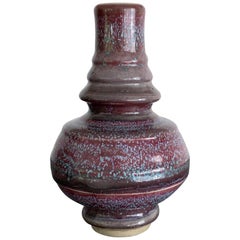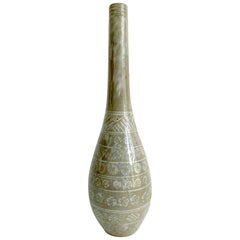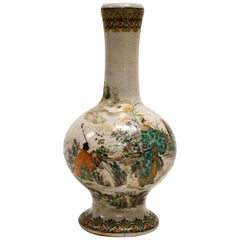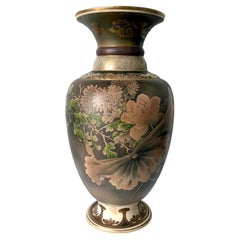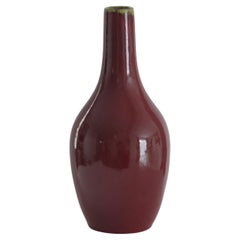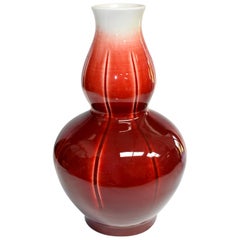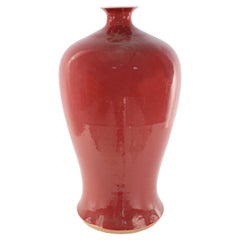Items Similar to Large Antique Chinese Sang-de-Boeuf LangYao Red Vase
Want more images or videos?
Request additional images or videos from the seller
1 of 18
Large Antique Chinese Sang-de-Boeuf LangYao Red Vase
$3,200
£2,429.39
€2,778.70
CA$4,470.86
A$4,972.58
CHF 2,596.53
MX$60,510.97
NOK 33,161.59
SEK 31,099.72
DKK 20,738.49
Shipping
Retrieving quote...The 1stDibs Promise:
Authenticity Guarantee,
Money-Back Guarantee,
24-Hour Cancellation
About the Item
A large Chinese vase with Sang-de-Boeuf (oxblood) glaze in a classic baluster form with a tall narrow neck and horizontal bands around the shoulder. The oxblood glaze is known as Langyao Red in Chinese. It is a copper based glaze originated in Ming dynasty before it nearly disappeared. It was later revived during Qing dynasty by the imperial court and reached the peak of its quality circa 17th-18th century. This vase is of an impressive size and harmonious proportion, potted on the thicker and heavy side. The red glaze is rather peculiar in terms of its transition from a thin near white appearance around the mouth to a brilliant red along the neck and shoulder, then onto a much darker mottled glaze with surface pooling texture on the main body. Some subtle crackles are visible on the upper part of the vase and the base has a celadon glaze with a green tint. This effect was likely due to the kiln accident when light dust adhered to the lower portion. Langyao ware was notorious for the difficult firing process to achieve the perfection, The "accident" however, rendered this piece interesting with a wabi-sabi effect. We estimated its age to be late Qing dynasty toward the end of the 19th century, although the slight green tint on the base glaze is an indicator of older pieces. An old paper sticker remained showing an inventory number and price.
- Dimensions:Height: 15.5 in (39.37 cm)Diameter: 6 in (15.24 cm)
- Style:Chinese Export (Of the Period)
- Materials and Techniques:
- Place of Origin:
- Period:
- Date of Manufacture:19th Century
- Condition:Wear consistent with age and use. some surface wear and a couple of marks on the foot ring.
- Seller Location:Atlanta, GA
- Reference Number:1stDibs: LU945021867962
About the Seller
4.9
Platinum Seller
Premium sellers with a 4.7+ rating and 24-hour response times
Established in 2006
1stDibs seller since 2010
564 sales on 1stDibs
Typical response time: <1 hour
- ShippingRetrieving quote...Shipping from: Atlanta, GA
- Return Policy
Authenticity Guarantee
In the unlikely event there’s an issue with an item’s authenticity, contact us within 1 year for a full refund. DetailsMoney-Back Guarantee
If your item is not as described, is damaged in transit, or does not arrive, contact us within 7 days for a full refund. Details24-Hour Cancellation
You have a 24-hour grace period in which to reconsider your purchase, with no questions asked.Vetted Professional Sellers
Our world-class sellers must adhere to strict standards for service and quality, maintaining the integrity of our listings.Price-Match Guarantee
If you find that a seller listed the same item for a lower price elsewhere, we’ll match it.Trusted Global Delivery
Our best-in-class carrier network provides specialized shipping options worldwide, including custom delivery.More From This Seller
View AllAsian Flambe Studio Pottery Vase
By Kyoto Pottery
Located in Atlanta, GA
A garlic bottle vase in an archaic Chinese form, but likely Japanese in origin. Several circumventing grooves however, suggest a more modern age. It was done in a brilliant purple glaze over a robin egg blue background glaze. The bubbling and bursting effects during the firing renders the surface an artistic spotting effect. The color pallet recalls the Classic Jun Yao...
Category
Antique Late 19th Century Japanese Japonisme Ceramics
Materials
Ceramic
Japanese Mishima Ceramic Vase Meiji Period
Located in Atlanta, GA
A Japanese long neck slender ceramic vase in the style of Mishima, circa 19th century, Meiji period. Mishima pottery was originally imported from three islands in Taiwan and then fro...
Category
Antique 19th Century Japanese Japonisme Ceramics
Materials
Ceramic
Early Japanese Satsuma Antique Vase
By Satsuma
Located in Atlanta, GA
An Satsuma ceramic stone ware vase, circa 19th century, around the end of the Edo and the beginning of Meiji period. In the form of a Classic garlic bottle whose prototype was from China, the white bodied piece is decorated with an early form of kin nishikide, the so called golden brocade, a palette of iron-red, blue, green, yellow, purple and black with golden highlight. The over glazed enamel paint shows a group of robed figures in a garden setting with a lion and three tigers. A transparent overall glaze shows very fine crackles. The design is relatively sparse with plenty of negative space in contrast to the Satsuma production from the late 19th century, when the trend became fussy and overly glitz, due to the influence by the perceived western taste for the export market. This piece may still be made for export but its pattern was more influenced by both Kyoto Pottery and the Kano school of painting compared to the export ware by the end of the 19th century onward to the early 20th century. It was believed by many that this was a result of Satsuma potters visiting Kyoto in the late seventeenth century to learn over glaze painting techniques.
There are some age glaze crackles especially around the foot. The piece is not signed in keeping with the earlier production before Satsuma ceramics...
Category
Antique Mid-19th Century Japanese Japonisme Ceramics
Materials
Ceramic
$2,850 Sale Price
25% Off
Large Japanese Satsuma Ceramic Vase Kinkozan
By Kinkozan
Located in Atlanta, GA
A large Japanese ceramic vase from the end of Meiji period circa 1890-1910s by Kinkozan (1645-1927). One of the largest studio manufacturers of the export ceramics at the time based in Kyoto. In the typical style of satsuma made at the turn of 20th century, the vase is elaborately decorated with a rather unusual kinran-de (gold paint) and green enamel highlight on a mottled brown background. The painterly decoration depicts a large seasonal floral arrangement in a circular fashion. Besides the obviously superb craftsmanship, what sets this particular vase apart from many lower quality and mass-produced pieces is its tone-on-tone color pallet that is visually somber and the small and sensitive details that heralds the change of the seasons. When the viewer goes beyond the first casual glimpse of the blossom and foliage, one would notice that on the edges of certain leaves as well as along the stalks, there accumulates a very thin layer of the white dust that represents the frost. The flower in bloom are chrysanthemums. Despite of being splendid, they are the messengers of the autumn. The large lotus leaf was subtly rendered in a bended and slightly withered manner, just past its prime. Although the lotus is still in bloom, the prominent seed pod indicates it may be the last for the season. The sentimental capture of the change of the seasons is not unusual in Japanese art. This vase poetically represents such a subtle transition from summer to fall, perhaps depicting the very first frost.
The neck of the vase is also slightly unusual with two rolled rings...
Category
Early 20th Century Japanese Meiji Ceramics
Materials
Ceramic
Korean Caledon Vase Bottle with Kintsugi Repair Goryeo Dynasty
Located in Atlanta, GA
A ceramic wide-mouthed bottle vase covered in green celadon glaze from Goryeo dynasty circa 11-12th century. The bottle vase with such a form (mouth with wide rim, long and slender neck, tall body with swelled shoulders that taper down toward the base) is known as "kwanggubyong" in Korean and developed from the prototype of bottles from united Silla kingdom. It was used for holding oil or liquid. Some of this type of vase take a plain form without much decoration other than glaze; Some feature basic geometrical lines, such as this one. Three concentric rings were featured along the neck and on the shoulder. Some with more carving on the body (see a vase in the collection of Brooklyn Musuem, 79.246.3) or a simple paint with iron glaze (See c.16-1930 in Fitzwilliam Musuem, Cambridge, UK).
The vase on offer is covered in a lovely green celadon glaze which exhibits fine even crackles throughout the surface. It has a slightly uneven base with the foot ring shaved by the potter. The surface is original with a nice mellow patina. There is a historical kintsugi repair on the mouth rim, with its gold vain...
Category
Antique 15th Century and Earlier Korean Archaistic Ceramics
Materials
Ceramic
Antique Korean Buncheong Ceramic Vase with Incised Designs
Located in Atlanta, GA
A Korean ceramic bottle form jar of Buncheong ware circa 15-16th century Joseon Dynasty. The surface of the jar features a celadon glaze and an elaborate incised design of large flor...
Category
Antique 16th Century Korean Archaistic Ceramics
Materials
Ceramic
You May Also Like
Large 19thC Chinese Export Porcelain Vase "Sang-de-boeuf" Ox Blood Red, Qing
Located in Lincoln, Lincolnshire
This is a very decorative porcelain Large Chinese Export Bottle Vase or jar with a monochrome ox blood red "Sang-de-bouef" glaze, having a very light green glaze at the top rim, whic...
Category
Antique 19th Century Chinese Qing Ceramics
Materials
Porcelain
Antique Chinese 19th Century Qing Red Sang de Boeuf Oxblood Crackle Glaze Vase
Located in Portland, OR
Antique Chinese Qing dynasty (1644-1911) late 19th century bottle vase.
The vase with a red crackle glaze to the outisde and a cream crackle glaze to the interior. The vase of bottle...
Category
Antique 1890s Chinese Qing Ceramics
Materials
Porcelain
Chinese Sang De Boeuf Oxblood Red Porcelain Vase
Located in Somis, CA
Gourd shaped Sang-De-Boeuf vase with unique stripes. Exterior covered in a glorious liver-red glaze, interior glazed white, inscribed to the base with a Jin De Zhen...
Category
Late 20th Century Chinese Ceramics
Materials
Porcelain
Chinese Porcelain Pomegranate Red Glazed Meiping Vase
Located in Queens, NY
Chinese porcelain Meiping vase with a robust pomegranate red glaze.
Category
20th Century Chinese Chinese Export Vases
Materials
Porcelain
18th Century Oxblood Red Chinese Porcelain Vase
Located in Los Angeles, CA
Traditional Chinese porcelain vase in an oxblood red tone (18th century).
Dimensions:
15"H x 9"D.
Category
Antique 18th Century Chinese Vases
Materials
Porcelain
Large Chinese Cinnabar Lacquered Vase
Located in San Diego, CA
A very large, well crafted Chinese cinnabar lacquered vase with copper / brass lining, circa 1950's. The vase are 19" high and 9" in diam...
Category
Mid-20th Century Chinese Vases
Materials
Brass, Copper
$680 Sale Price
20% Off
More Ways To Browse
Red Antique Vase
Large Chinese Vase
Red Chinese Ceramics
Antique Red And White China
Old Chinese Ceramics
Chinese Antique Green Glaze Ceramics
Old Chinese Vases
Chinese Celadon Ceramics
Antique Chinese Crackle
17th Century Chinese Vase
Chinese Copper Vase
Ming Dynasty Vases
Green Ming Dynasty
Oxblood Glaze
Green Crackle Vase
Tall Thin Vase
Oxblood Vase
Antique Chinese Celadon Vases

